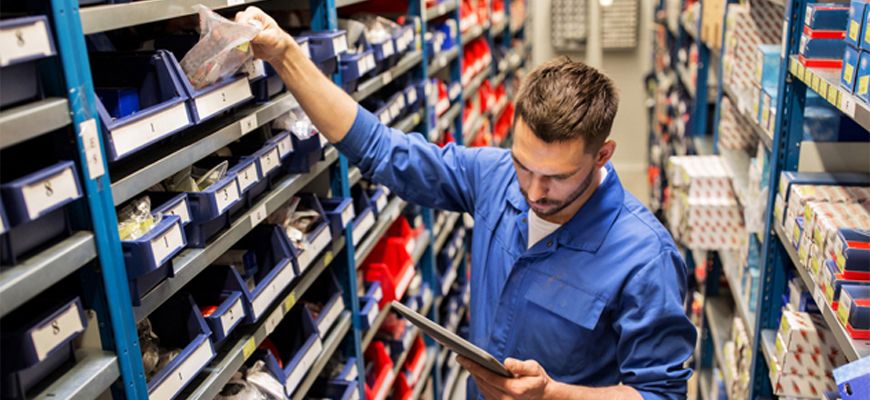Spares and inventory optimisation
Maintenance spare parts are held to support planned maintenance tasks and to avoid or mitigate the risks associated with stockouts. For critical equipment, stockouts can result in lengthy asset downtime and production losses while spare parts are being replenished.
 The Problem – Which ones to hold and how many?
The Problem – Which ones to hold and how many?
The decision on what spares to hold and how many is therefore a very important one. Overstocking will result in waste, as valuable capital is tied up in inventories. Under stocking exposes the organisation to elevated risks which may result in significant production losses. To determine the optimum level for maintenance inventories therefore requires calculation, balancing the risk costs against holding costs over the life of the asset. The factors that enter into this calculation are as follows:
- Cost of the spare
- Re-order lead time
- Demand rate (or MTBF)
- Number of supported installations
- Asset configuration (standalone or duty/standby)
- Cost of downtime at each installation
- Cost of capital (discount rate)
- Repairability
- Remaining Life
The KTT Solution - Optimisation Using Isograph AWB Software
Isograph AWB uses a powerful Monte Carlo calculation engine to model complex inventory scenarios and determine the optimum level of spare holdings. Isograph AWB has a simple user interface, so its easy to learn and quick to generate results making it the ideal solution for taking the guesswork out of spares decisions.
Isograph Availability Workbench (AWB) is the latest in a line of Isograph products to serve the Reliability and Maintenance community.
AWB integrates updated versions of the AvSim+ (Availability Simulation Software) and RCMCost (Reliability Centered Maintenance) products. These products have been used in industry since 1988. It also includes a brand-new life cycle cost analysis module.
Availability Workbench provides a fully integrated environment for:
- Reliability Centered Maintenance. Developing and maintaining a Reliability Centered Maintenance (RCM) program to optimize your reliability and maintenance strategy.
- Availability Simulation. Performing full system availability predictions taking into account complex dependencies on spares and other resources.
- Life Cycle Cost Analysis. Performing a Life Cycle Cost Analysis to calculate the expected costs of your system during its lifetime.
- Weibull Analysis. Analyzing historical failure data to model the failure characteristics of equipment.
- SAP Interface. The AWB SAP Interface allows you to transfer data between AWB and SAP. Interfaces to Maximo & Ellipse are also available
How Can KTT Help you? KTT can help answer questions such as:
- Is planned maintenance cost effective?
- How often should it be performed?
- What design improvements are cost and safety effective?
- What is the optimum level of spares to be held on site and at a depot?
- How can labor and equipment usage be improved?
- How can risk be reduced?
- What are the likely life cycle costs?
- What is the best frequency for performing major overhauls?
- How is predictive maintenance carried out?
- How do ageing assets affect life cycle costs?
Please contact us for more information.
